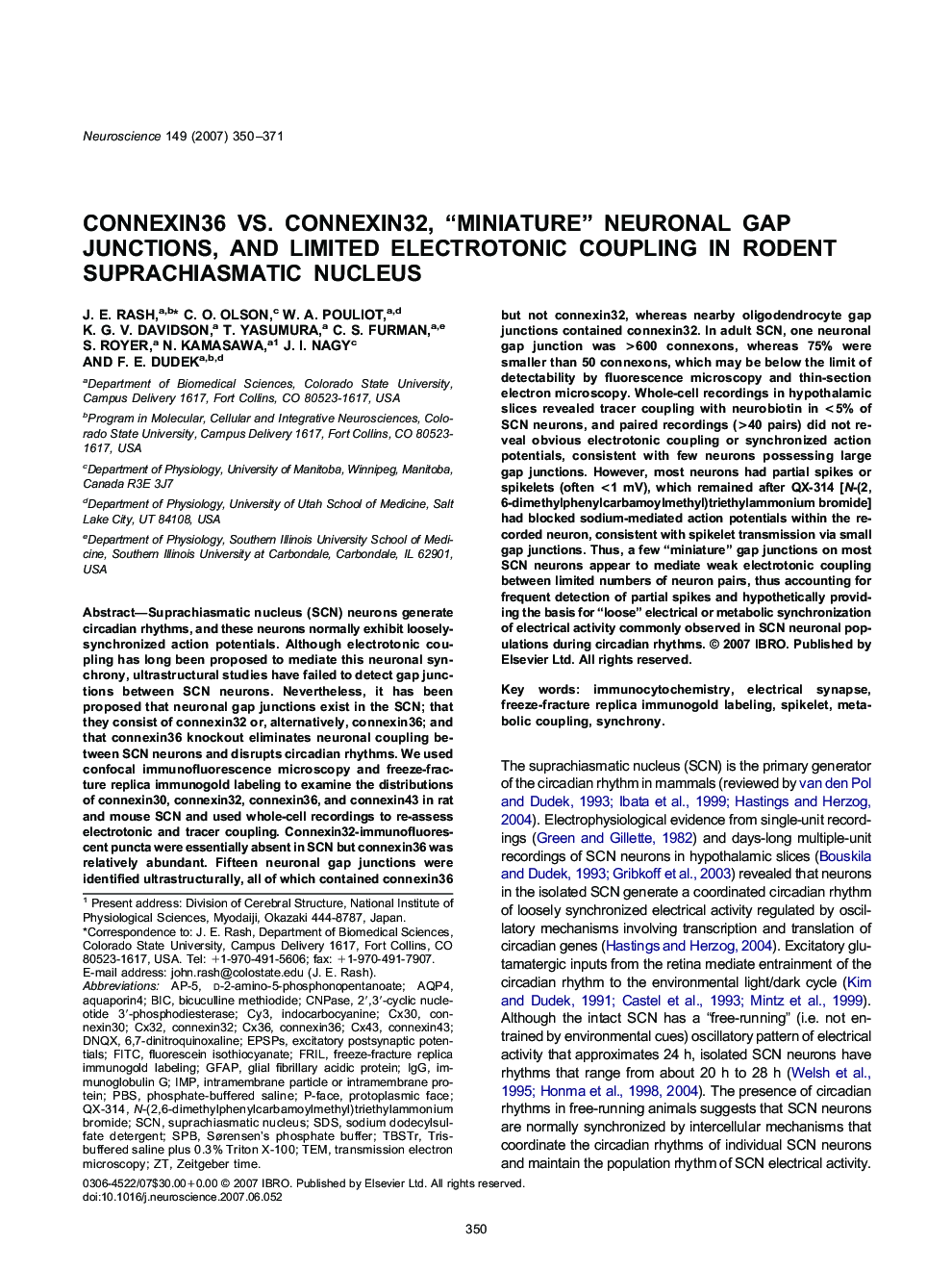| کد مقاله | کد نشریه | سال انتشار | مقاله انگلیسی | نسخه تمام متن |
|---|---|---|---|---|
| 4342472 | 1295870 | 2007 | 22 صفحه PDF | دانلود رایگان |

Suprachiasmatic nucleus (SCN) neurons generate circadian rhythms, and these neurons normally exhibit loosely-synchronized action potentials. Although electrotonic coupling has long been proposed to mediate this neuronal synchrony, ultrastructural studies have failed to detect gap junctions between SCN neurons. Nevertheless, it has been proposed that neuronal gap junctions exist in the SCN; that they consist of connexin32 or, alternatively, connexin36; and that connexin36 knockout eliminates neuronal coupling between SCN neurons and disrupts circadian rhythms. We used confocal immunofluorescence microscopy and freeze-fracture replica immunogold labeling to examine the distributions of connexin30, connexin32, connexin36, and connexin43 in rat and mouse SCN and used whole-cell recordings to re-assess electrotonic and tracer coupling. Connexin32-immunofluorescent puncta were essentially absent in SCN but connexin36 was relatively abundant. Fifteen neuronal gap junctions were identified ultrastructurally, all of which contained connexin36 but not connexin32, whereas nearby oligodendrocyte gap junctions contained connexin32. In adult SCN, one neuronal gap junction was >600 connexons, whereas 75% were smaller than 50 connexons, which may be below the limit of detectability by fluorescence microscopy and thin-section electron microscopy. Whole-cell recordings in hypothalamic slices revealed tracer coupling with neurobiotin in <5% of SCN neurons, and paired recordings (>40 pairs) did not reveal obvious electrotonic coupling or synchronized action potentials, consistent with few neurons possessing large gap junctions. However, most neurons had partial spikes or spikelets (often <1 mV), which remained after QX-314 [N-(2,6-dimethylphenylcarbamoylmethyl)triethylammonium bromide] had blocked sodium-mediated action potentials within the recorded neuron, consistent with spikelet transmission via small gap junctions. Thus, a few “miniature” gap junctions on most SCN neurons appear to mediate weak electrotonic coupling between limited numbers of neuron pairs, thus accounting for frequent detection of partial spikes and hypothetically providing the basis for “loose” electrical or metabolic synchronization of electrical activity commonly observed in SCN neuronal populations during circadian rhythms.
Journal: Neuroscience - Volume 149, Issue 2, 26 October 2007, Pages 350–371